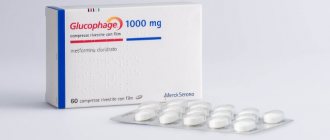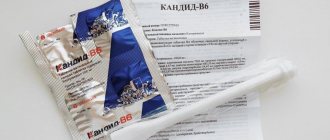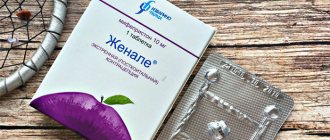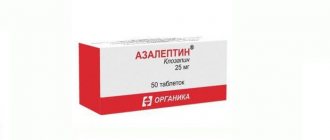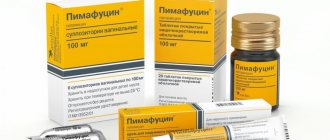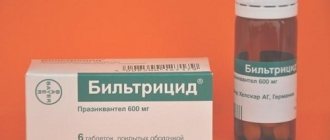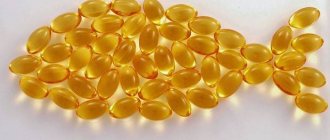Instructions for use of Rosuvastatin
The drug Rosuvastatin has a hypolipidemic effect and contains the active substance of the same name. The medicine is produced by many companies - the Russian Canon and Northern Star, the Israeli Teva. The use of the drug is justified if there are elevated levels of lipids and cholesterol in the blood. The product normalizes the concentration of these substances, restoring health to a person.
Composition and release form
Rosuvastatin is available only in tablet format; there are no other forms of release. Features of the composition:
| Description | Round light pink tablets, white inside |
| Concentration of rosuvastatin in the form of calcium salt, mg per piece. | 5, 10 or 20 |
| Supporting cast | Carmine red, microcrystalline cellulose, triacetin, pregelatinized starch, magnesium stearate, titanium dioxide, colloidal silica, hypromellose, lactose monohydrate |
| Package | Packages of 10 pcs., 3 or 6 per pack |
Pharmacodynamics and pharmacokinetics
The lipid-lowering drug Rosuvastatin is a selective inhibitor of the enzyme gamma-glutamyl transpeptidase, which promotes the formation of mevalonate, a cholesterol precursor. The active substance of the drug works in the liver, where cholesterol synthesis and catabolism of low-density lipoproteins occur. The drug increases the number of receptors for the latter on the surface of liver cells, increases their uptake and catabolism, which inhibits the synthesis of very low density lipoproteins.
Once in the blood, the inhibitor and efflux transporter Rosuvastatin reaches its maximum concentration after five hours. Its metabolism with the participation of cytochrome isoenzymes occurs in the liver; it binds to albumin by 90%. After elimination in the liver, metabolites are formed that are minimally active and do not affect the transport of organic anions and polypeptides, the clearance of creatinine and creatine phosphokinase, and the biosynthesis of cholesterol.
Almost the entire dose of the drug is excreted unchanged through the intestines, the remainder is excreted through the kidneys and urine. The half-life is 19 hours. The pharmacokinetics of the active substance of the composition are not affected by gender or age, but there are differences in achieving the maximum concentration in representatives of other races (twice as much in Mongoloids and Indians than in Caucasians and Negroids).
Active ingredient: Rosuvastatin
The active component of the inhibitor composition reduces elevated levels of cholesterol, triglycerides, low-density lipoproteins, apolipoprotein, and increases the reduced concentration of high-density lipoproteins. As a result, in patients with hypercholesterolemia, the lipid profile improves and the atherogenic index decreases. The therapeutic effect of the drug develops within a week, reaching its maximum by a month of therapy. The drug is indicated for adults with hypercholesterolemia with or without triglyceridemia, with a tendency to stroke or heart attack.
Indications for use
The main factors for using the drug Rosuvastatin are diseases associated with elevated lipid levels. Indications:
- primary hypercholesterolemia, including familial heterozygous type, or mixed hypercholesterolemia in combination with diet and exercise;
- familial homozygous hypercholesterolemia in combination with diet and lipid-lowering therapy;
- hypertriglyceridemia;
- slowing the progression of atherosclerosis;
- primary prevention of stroke, heart attack, arterial revascularization without signs of coronary heart disease, but with the risk of its development (old age, arterial hypertension, smoking, family history).
Description and composition
The active substance of the drug is calcium rosuvastatin. The auxiliary ingredients included in the composition are as follows:
- pregelatinized starch;
- microcrystalline cellulose;
- magnesium stearate;
- povidone;
- colloidal anhydrous silicon dioxide.
The film shell is made of titanium dioxide, hypromellose, macrogol, lactose monohydrate, triacetin.
The dosage form of the drug is film-coated biconvex white tablets. Depending on the dosage of Rosuvastatin - five, ten, twenty, forty milligrams, the corresponding numbers are engraved on one side of the tablet.
How to take Rosuvastatin
The tablets are taken orally with water. They should not be chewed or crushed. The drug is taken at any time of the day and is not associated with food. Before starting treatment, the patient must follow a diet limiting foods containing unhealthy fats. The initial dose for patients is 5 or 10 mg of rosuvastatin once a day. After 4 weeks, the dosage may be increased.
Rosuvastatin at a dose of 40 mg is prescribed with caution; such patients require special monitoring. Every 2-4 weeks of therapy, patients donate blood to determine lipid levels. For elderly patients, the dose is not adjusted; in case of severe renal failure, taking tablets is contraindicated. For moderate liver dysfunction, the dose cannot exceed 5 mg.
Pharmacokinetics
After oral administration, Cmax of rosuvastatin in blood plasma is achieved in approximately 5 hours. Bioavailability is approximately 20%.
Rosuvastatin accumulates in the liver. Vd - approximately 134 liters. Plasma protein binding (mainly albumin) is approximately 90%.
It is biotransformed to a small extent (about 10%), being a non-core substrate for isoenzymes of the cytochrome P450 system. The main isoenzyme involved in the metabolism of rosuvastatin is CYP2C9. Isoenzymes CYP2C19, CYP3A4 and CYP2D6 are involved in metabolism to a lesser extent.
The main identified metabolites of rosuvastatin are N-dismethyl and lactone metabolites. N-dismethyl is approximately 50% less active than rosuvastatin; lactone metabolites are pharmacologically inactive.
About 90% of the rosuvastatin dose is excreted unchanged in the feces. The remainder is excreted in the urine. Plasma T1/2 - approximately 19 hours. T1/2 does not change with increasing dose. The average plasma clearance is approximately 50 l/h (coefficient of variation 21.7%).
As in the case of other HMG-CoA reducase inhibitors, the membrane transporter Xc is involved in the process of hepatic uptake of rosuvastatin, which plays an important role in the hepatic elimination of rosuvastatin.
Systemic exposure of rosuvastatin increases in proportion to the dose.
In patients with severe renal failure (CR
In patients with liver failure, the degree of which was 8 and 9 on the Child-Pugh scale, an increase in T1/2 by at least 2 times was noted.
special instructions
Rosuvastatin actively affects the functioning of the liver, kidneys, and other body systems, so its therapy is accompanied by special instructions. Rules for taking pills:
- High doses of the drug can cause transient tubular proteinuria. During treatment, kidney function should be monitored.
- Doses exceeding 20 mg/day can cause myalgia, myopathy, rhabdomyolysis, and other abnormalities in the musculoskeletal system. If patients have risk factors for the development of such pathologies, the drug is prescribed with caution.
- If during treatment the patient suddenly experiences muscle pain, weakness or spasms due to malaise or fever, an urgent need to visit a doctor. Rare cases of immune-mediated myopathy (muscle weakness, increased enzyme activity) occur. To eliminate negative signs after serological analysis, therapy with immunosuppressive drugs is carried out.
- Taking Rosuvastatin tablets does not increase the effect on skeletal muscles.
- If hypercholesterolemia is caused by hypothyroidism or nephrotic syndrome, then you must first eliminate the underlying disease, and then take Rosuvastatin.
- The medication is discontinued when the activity of liver transaminases triples.
- The medicine contains lactose, so its use is contraindicated in case of lactose intolerance, lactase deficiency, glucose-galactose malabsorption.
- Long-term statin therapy can cause interstitial lung disease, which is characterized by shortness of breath, cough, weakness, weight loss, and fever. If these signs are detected, therapy is canceled.
- During treatment with the medication, dizziness and weakness may occur, so it is recommended to refrain from operating machinery and vehicles.
- When prescribing the drug, genetic polymorphism should be taken into account.
Pharmacodynamics
“Rosuvastatin” (we’ll talk about what it helps with later) is an inhibitor of the enzyme HMG-CoA reductase. The main target of the drug is the liver, i.e. the organ where cholesterol is produced and the process of breakdown of low-density lipoproteins occurs. Thanks to its action, the concentration of both triglycerides and total cholesterol decreases. And the level of high-density proteins, on the contrary, increases. A week after taking Rosuvastatin tablets, the therapeutic effect appears, and after fourteen days it reaches ninety percent of the maximum possible. To maintain it, constant medication is required.
In childhood
The use of Rosuvastatin tablets in children and adolescents under 18 years of age is contraindicated. This ban is associated with the active influence of the drug on the liver, which can cause irreversible or serious disruptions in the functioning of this organ or the entire body. Prescribing a medication after 18 years of age should be preceded by a consultation with a doctor and a full examination.
- What does Spazmalgon help with?
- Homemade foot massagers - how to choose the best one
- Causes of diabetes mellitus
FDA
In March 2012, the FDA updated its guidance for statins to include case reports of memory loss, liver damage, high blood sugar, development of type 2 diabetes, and muscle damage[5]. The new guidance states:
- The FDA has determined that liver damage associated with statin use is rare but can occur.
- Case reports of memory loss, forgetfulness, and periods of confusion have been noted with all statins and in all age groups. These experiences are rare, but sufferers often report a "fuzzy" feeling in their thinking.
- Slight increases in the risk of high blood sugar and type 2 diabetes have been reported with the use of statins.
- Some drugs interact with statins in ways that increase the risk of muscle damage (myopathy), manifested by unexplained muscle weakness and pain.
Drug interactions
Rosuvastatin has an active effect on the work of other drugs. Possible combinations and interactions:
- The combination of the drug with Cyclosporine, human immunodeficiency virus (HIV) protease inhibitors, fibrates at a dose of 40 mg, and cytochrome substrate inducers is prohibited.
- Combinations of the drug in a dose of 5 mg with Gemfibrozil, lipid-lowering drugs, Fenofibrate, nicotinic acid, Fluconazole, Digoxin, and antibiotics are allowed.
- Rosuvastatin and Ezetimibe should be combined with caution.
- Two hours should pass between taking tablets and antacid suspensions based on aluminum or magnesium hydroxide, otherwise the effectiveness of the former is halved.
- The combination of the drug with Erythromycin increases the concentration of rosuvastatin in the blood serum by a third.
- The combination of the drug with fusidic acid can lead to the development of rhabdomyolysis.
- The dose of Rosuvastatin is adjusted when combined with Ritonavir, Atazanavir, Simeprevir, Lopinavir, Clopidogrel, Eltrombopag, Darunavir, Ketoconazole. A similar effect is required in combination with Tipranavir, Dronedarone, Itraconazole, Fosamprenavir, Aleglitazar, Silymarin, Rifampicin, Baikalin.
- The drug increases the excretion of oral contraceptives based on the hormones ethinyl estradiol and norgestrel.
Side effects
During treatment with tablets, side effects are mild and often go away on their own. Common negative effects from the drug Rosuvastatin are:
- diabetes;
- headache, dizziness, memory loss, peripheral neuropathy;
- constipation, pancreatitis, nausea, abdominal pain, hepatitis, diarrhea;
- itching, urticaria, rash, Stevens-Johnson syndrome;
- myalgia, rhabdomyolysis, myopathy, myositis, arthralgia;
- asthenic syndrome;
- swollen lymph nodes;
- immune abnormalities;
- proteinuria, hematuria;
- increased liver transaminases, glucose concentrations, bilirubin (jaundice);
- thrombocytopenia;
- cough, shortness of breath;
- gynecomastia;
- peripheral edema;
- depression, insomnia, nightmares;
- disruption of the thyroid gland, sexual function, and functioning of the cardiovascular system;
- increase in hemoglobin concentration.
Contraindications
Different doses of the drug have their own contraindications and cases in which they must be taken with caution. Differences:
| Contraindications | Cases requiring caution | |
| Dose 5, 10 or 20 mg |
|
|
| 40 mg | The above, plus:
|
|
High cholesterol: dangers
High cholesterol is very dangerous. First, the vascular walls are damaged, then fatty plaques form in them, the lumen of the vessels narrows, and a blood clot appears. Blood clots in the heart cause a heart attack, and in the brain a stroke.
As a rule, the doctor first recommends that the patient adjust his lifestyle - improve his diet, start playing sports, lose excess weight, quit smoking and limit alcohol consumption. But if these measures do not help, special medications are used.
Rosuvastatin analogues
You can replace Rosuvastatin tablets with drugs containing the same or similar active substance. Analogues of the drug include:
- Crestor - lipid-lowering tablets with the same active ingredient;
- Rozart - tablets with a similar composition for the treatment of cardiovascular diseases;
- Roxera - tablets from the statin group;
- Tevastor - tablets based on the same active ingredient, reduce cholesterol levels in the blood.
Rosuvastatin and Atorvastatin - what is the difference
An analogue of Rosuvastatin, Atorvastatin, is part of the same drug group of statins and is available in tablet format with hypolipidemic properties. Unlike the substance in question, atorvastatin is more soluble in fats rather than in blood plasma or other liquids, and therefore affects brain structures rather than liver cells (hepatocytes).
The drug Rosuvastatin is 10% more effective than Atorvastatin, which allows it to be used in the treatment of patients with high cholesterol levels. Also, the drug in question is more effective in blocking reductase in liver cells and has a pronounced therapeutic effect. The side effects of the drugs are the same, so the choice of medication lies entirely with the doctor.
Rosuvastatin price
In Russian pharmacies you can find drugs produced by different companies. The cost of the medicine depends on this; it is additionally affected by the concentration of the active substance and the number of tablets in the package. Approximate prices in Moscow:
| Manufacturer | Dosage, mg per piece. | Number of tablets in a pack, pcs. | Internet price tag, rubles | Pharmacy cost, rubles |
| North Star | 5 | 30 | 234 | 250 |
| 10 | 30 | 324 | 350 | |
| 20 | 30 | 378 | 399 | |
| 10 | 60 | 571 | 589 | |
| Vertex | 10 | 30 | 349 | 378 |
| 20 | 30 | 482 | 505 | |
| Canon | 10 | 28 | 382 | 401 |
| 20 | 28 | 429 | 450 |
Links
- Annual Report and Form 20-F, Information 2004 (PDF) (unavailable link - history
). AstraZeneca PLC (2005). Archived from the original on May 13, 2005. - Annual Report and Form 20-F, 2003 (PDF). AstraZeneca PLC (2004). Retrieved March 20, 2005. Archived May 13, 2005.
- Highlights of Prescribing Information (PDF). AstraZeneca PLC (2008). Retrieved March 11, 2009. Archived December 17, 2012.
- McTaggart F, Buckett L, Davidson R, Holdgate G, McCormick A, Schneck D, Smith G, Warwick M (2001). "Preclinical and clinical pharmacology of Rosuvastatin, a new 3-hydroxy-3-methylglutaryl coenzyme A reductase inhibitor." Am J Cardiol 87
(5A):28B–32B. DOI:10.1016/S0002-9149(01)01454-0. PMID 11256847. - Rosuvastatin bound to proteins in the PDB
- Rosuvastatin (Crestor) Information (unavailable link - history
). eMedicineHealth (October 16, 2005). Archived from the original on July 15, 2006. - US National Library of Medicine: Drug Information Portal - Rosuvastatin
- Extended instructions for use of the drug "Rosuvastin"

